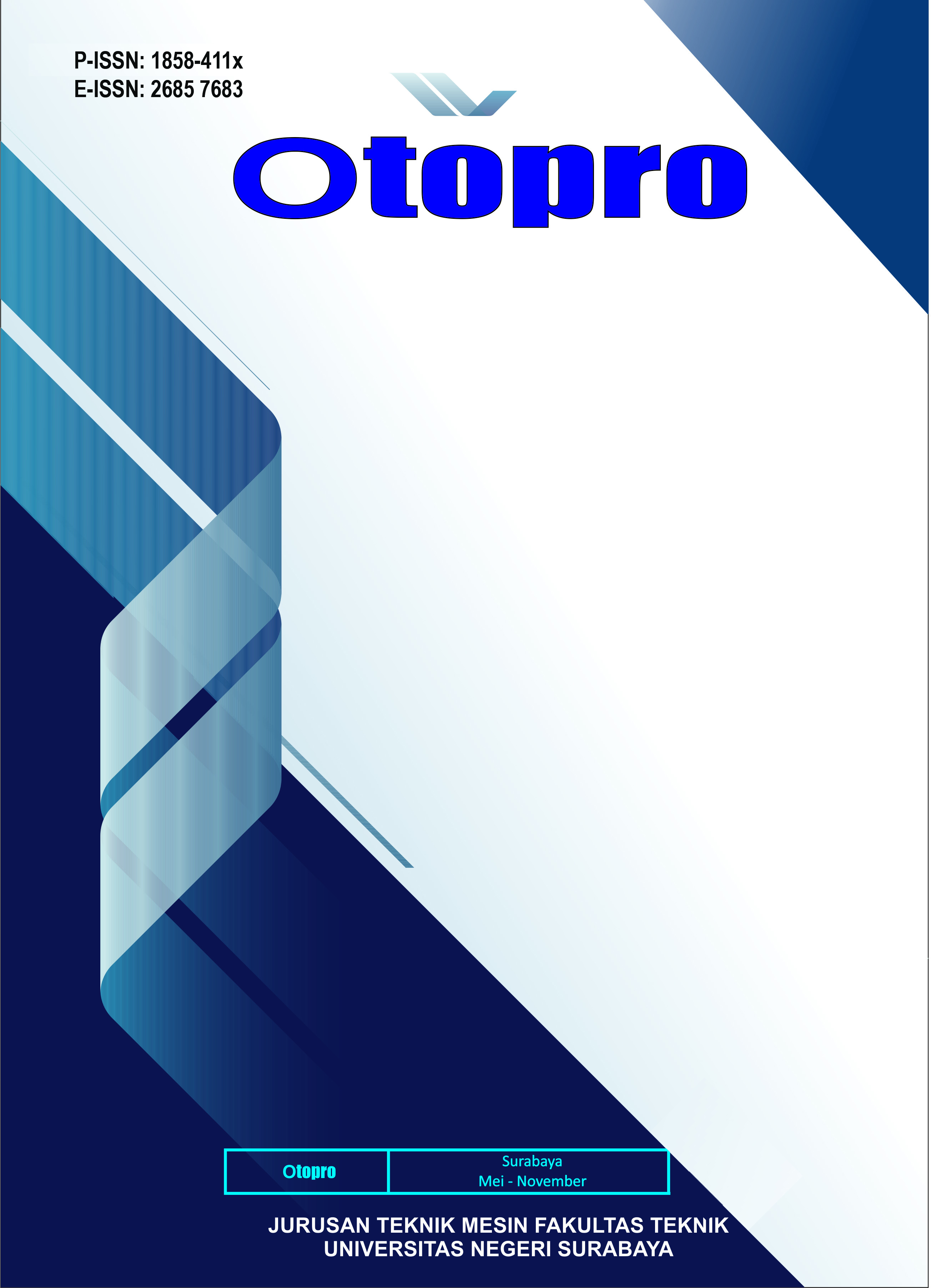SIMULASI PARAMETER PENGELASAN GESEK ROTARI PADA AL ALLOY 6061 T-6 DAN AISI 1018 DENGAN FINITE ELEMENT METHOD (FEM)
DOI:
https://doi.org/10.26740/otopro.v17n2.p38-47Keywords:
Rotary Friction Welding, Simulation, Finite Element Method , Al 6061 T-6 and AISI 1018Abstract
Rotary Friction Welding is a welding process that is carried out to connect metal materials in the form of a cylinder
by means of friction against the two materials to be joined by applying pressure. Therefore, researchers are interested in conducting simulations based on the finite element method with FEM software to solve the problem. The purpose of the simulation is to analyze the results of rotational speed, axial pressure, forging pressure and welding time. Parameters were analyzed for stress-strain values, temperature distribution and displacement visualized through contours. The parameters used are 2.5 MPa axial pressure, 4 MPa forging pressure and 1500 RPM rotational speed and welding time of 10 seconds. Simulation data shows that the stress strain analysis obtained a strain of 1.8 and a stress of 315 MPa, the displacement value was 5.2 mm and the temperature distribution value was 582ᴼC with the axial and forging pressure welding parameters 2.5 MPa, 4 MPa, rotational speed 1500 RPM with a welding time of 10 seconds. The research validation can be said to be valid because it has fulfilled the tensile strength value of 305 MPa in the tensile test based on the value of the mechanical properties of Aluminum alloy with a margin of error of 1.61%<5%. The connection results are said to be valid because they have been analyzed and then validated to meet the standard mechanical properties that have been determined by the researcher so that the welding parameters used can be recommended to be done experimentally.
References
ANSI AWS, Recommended Practices for Friction Welding, vol. 89, no. October. 2009.
H. A. Rasyid, Laporan akhir penelitian kebijakan fakultas, no. 8. 2017.

Downloads
Published
How to Cite
Issue
Section
License

This work is licensed under a Creative Commons Attribution-NonCommercial 4.0 International License.
 Abstract views: 593
,
Abstract views: 593
, PDF Downloads: 873
PDF Downloads: 873


3.png)










